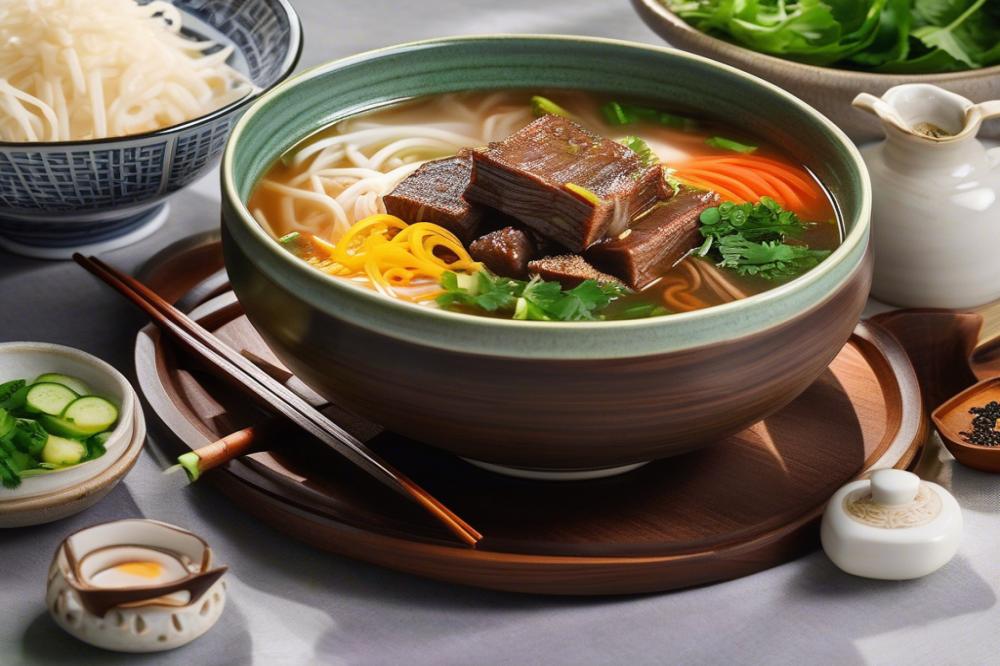Introduction
recipebix.com/how-to-make-authentic-kimchi-bokkeum-fried-rice”>Galbitang is a cherished dish in Korean cuisine. This hearty soup made with beef short ribs offers warmth and nourishment. Often enjoyed during family gatherings or cold winters, it holds a special place in many hearts. The rich and savory flavors create a sense of comfort that many people crave.
Traditional recipes like this one are essential because they connect us to our cultural roots. They remind us of home and the love that goes into cooking. Comfort food, such as this Korean beef Short Rib Soup, not only fills the stomach but also warms the soul. The blending of rich, Asian flavors enhances the experience, making every spoonful delightful.
The purpose of this article is to share a classic recipe for Galbitang. By doing so, we hope to inspire you to recreate this beloved dish in your own kitchen. Gather your ingredients and get ready to explore a recipe that has stood the test of time in Korean cuisine. Cook with passion, and enjoy every step of the journey.
Understanding Galbitang
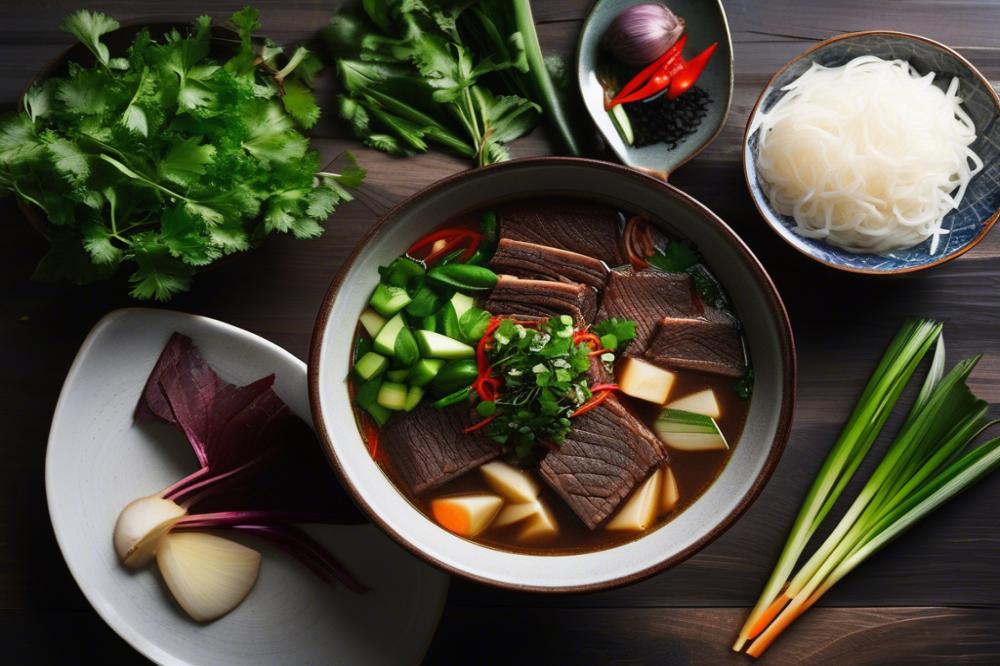
Galbitang is a traditional Korean soup made with beef short ribs. It holds a special place in Korean culture, often served during family gatherings, holidays, and special occasions. This dish offers not just nourishment, but also warmth and comfort. In many households, having galbitang on the table symbolizes love and care, making it a beloved comfort food.
The origins of galbitang date back hundreds of years. It is thought to have been around during the Joseon Dynasty when royal families enjoyed it. As time went on, the soup became a staple among the general population. Recipes have varied across different regions, with each adding its own twist. Today, this hearty dish still represents tradition and heritage in Korean cuisine.
Short ribs play a significant role in this recipe. They are favored for their rich flavor and tender texture. The marbled fat within the beef adds depth to the soup, making each bite enjoyable. In Korean meals, short ribs are often a highlight. They not only enhance the taste but also connect families through shared meals. The process of cooking them slowly in the broth allows the flavors to meld beautifully, creating a dish full of Asian flavors.
This soup embodies the heart of Korean cooking. It reflects a balance of simple ingredients coming together to create something special. People gather around to savor the rich aromas and hearty warmth of galbitang. Each bowl tells a story of togetherness, tradition, and love passed through generations.
Ingredients and Cooking Instructions
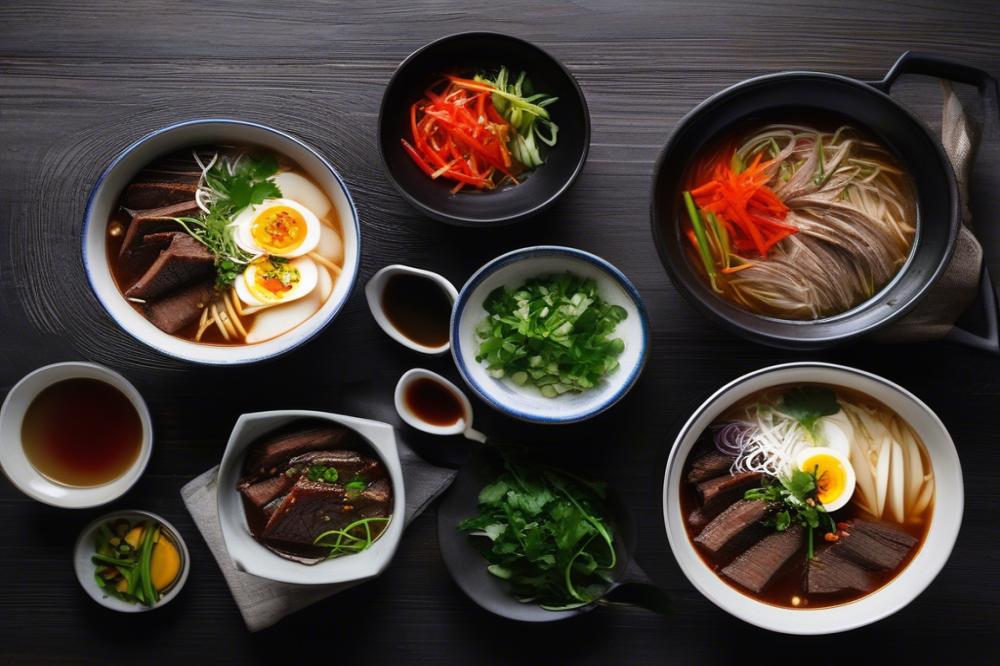
Detailed Ingredients List
- 2 lbs beef short ribs
- 12 cups water
- 1 medium onion, quartered
- 4 cloves garlic, crushed
- 2 tablespoons soy sauce
- 1 tablespoon sesame oil
- 1 teaspoon salt (adjust to taste)
- 1 teaspoon black pepper
- 1 medium potato, diced
- 1 medium carrot, sliced
- 2 green onions, chopped
- Optional: pepper flakes for heat
Step-by-Step Cooking Instructions
Start by preparing the short ribs. Rinse them under cold water. This step helps remove any bone fragments or blood. Pat them dry with a paper towel. Season with salt and black pepper to enhance the flavor.
Next, place the short ribs in a large pot. Add the water, onion, and garlic. Bring this mixture to a boil over medium-high heat. Once it reaches a boil, reduce the heat to low. Let the mixture simmer for about an hour. This process is essential for creating a flavorful stock.
After simmering, skim off any foam that appears on the surface. This helps keep the soup clear and tasty. Stir in the soy sauce and sesame oil. Now is the time to add the diced potato and sliced carrot. Simmer for another 30 minutes until the vegetables become tender.
When the cooking time is nearing completion, taste the soup. Adjust the seasoning with additional salt or pepper if needed. If you like some spice, feel free to sprinkle in pepper flakes. The flavors of the soup should be rich and comforting.
Once everything is cooked, ladle the soup into bowls. Top each serving with chopped green onions for freshness. Enjoy this hearty dish with rice or by itself for a truly traditional experience. Korean cuisine shines through in this delicious bowl of comfort food.
Nutritional Information
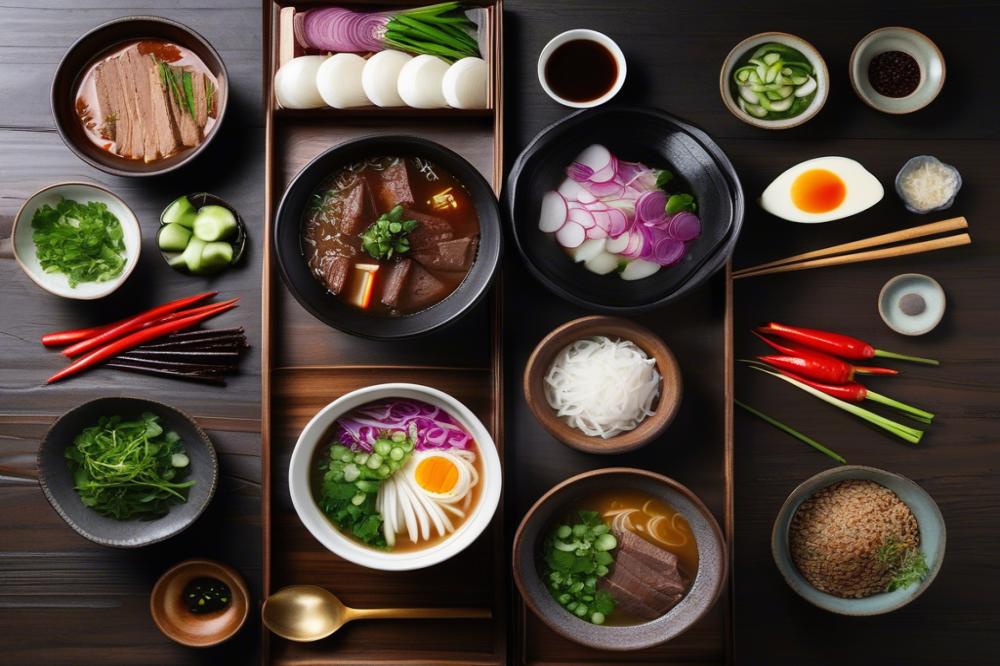
The recipe for Galbitang revolves around several key ingredients, most notably beef short ribs, vegetables, and flavorful seasonings. Understanding the nutritional values of these components reveals why this dish is not only comforting but also satisfying.
Beef short ribs provide a rich source of protein, which is essential for building and repairing tissues. Typically, a 3-ounce serving of beef can contain approximately 200 calories, along with around 22 grams of protein and 15 grams of fat. The fat content contributes to the soup’s rich taste. Furthermore, short ribs also offer important vitamins and minerals like iron and zinc.
Vegetables like radish and green onions add both flavor and nutritional benefits. Daikon radish, a common addition, is low in calories and high in fiber, promoting digestive health. In a typical serving, it might contribute about 18 calories alongside essential nutrients like Vitamin C. Similarly, green onions enhance the dish’s freshness while providing vitamins A and K.
This soup features a harmonious blend of complex carbohydrates, primarily from the vegetables used. Carbohydrates serve as the body’s primary energy source. Although the short ribs do dominate in protein and fat, the balance of ingredients makes Galbitang a hearty option, perfect for family gatherings.
The use of garlic and ginger enhances flavor and offers numerous health benefits. Garlic is known for its immune-boosting properties, while ginger can aid in digestion. These add a unique depth to the Korean cuisine experience. Combining spices and herbs creates a comforting and aromatic profile that defines this traditional dish.
This short rib soup incorporates various essential nutrients, making it more than just a delicious meal. Each ingredient plays a role in creating a dish that is both hearty and satisfying. Enjoying a bowl of Galbitang provides warmth and sustenance, ideal for cold days or a relaxing dinner with loved ones.
Cooking Tips and Variations
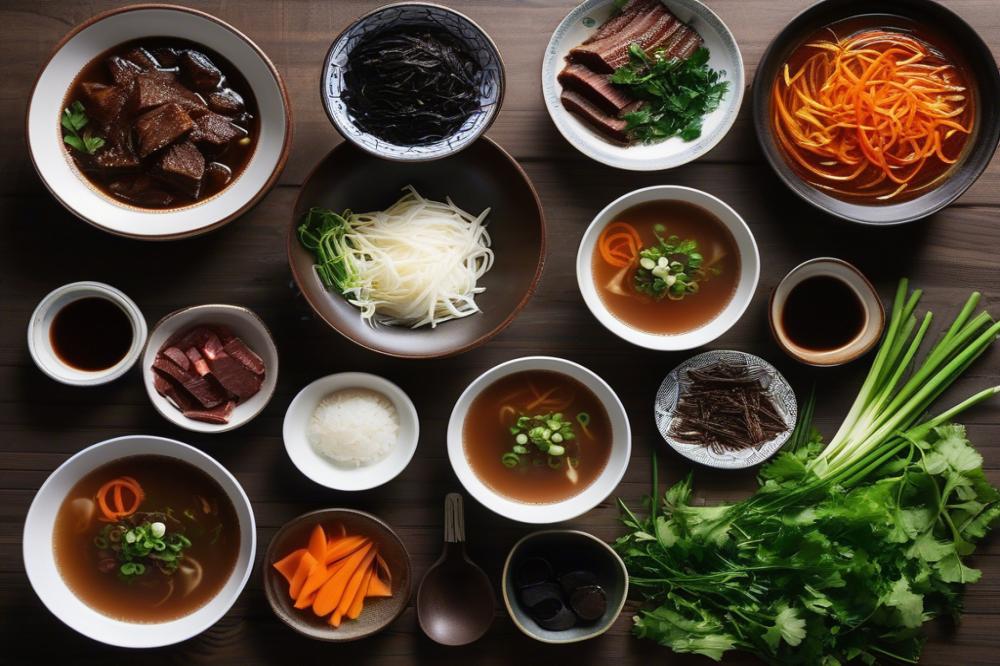
To achieve the best flavor and texture in your Galbitang, start with quality beef short ribs. Look for ribs with a good amount of marbling, as this fat will render down and enrich the soup with flavor. A quick soak in cold water before cooking helps remove excess blood and impurities. This step enhances the soup’s clarity and taste.
While cooking, simmer the broth gently. High heat can toughen the meat, making it less enjoyable. Add onions, garlic, and ginger to build a solid foundation of flavor. Many cooks suggest a sprinkle of salt early on, and then adjust it later to boost the taste further. A bay leaf or a few whole cloves can add a delightful depth to the aroma.
Dietary Variations
For those following a vegetarian diet, a unique version can still capture the heartiness of traditional Korean flavors. Consider using mushrooms, such as shiitake or portobello, as a substitute for meat. Combine them with a rich vegetable broth and add tofu for protein. Vegetables like daikon radish and carrots can keep the soup vibrant and nutritious.
If you are trying different cuts of beef, oxtail or brisket may work well, although they need different cooking times. Different meats will alter the final flavor, but all can provide a delicious result. Personal preferences can truly guide your choices in this recipe.
Side Dishes
In Korea, no meal is complete without side dishes. Kimchi is often served alongside the beef soup, offering a spicy, tangy contrast. A simple cucumber salad can refresh the palate with its crunchiness. Steamed rice serves as a perfect pairing. Mixing rice into the soup adds a comforting texture.
Adding a bowl of pickled vegetables or a savory pancake can enhance the dining experience. Soak in the combination of flavors that make Korean cuisine special. These side dishes not only complement the hearty soup, but they also elevate the meal to a feast.
Cultural Significance and Serving
Galbitang holds a special place in heart of Korean culture. This delicious soup often appears at gatherings and celebrations. Families gather around to share the warmth of this comforting dish. The rich flavors and tender short ribs are more than just food; they bring people together.
On special occasions, serving this beef soup involves a bit more care. Traditionally, it might be accompanied by side dishes called banchan and a platter of rice. Presentation matters during celebrations. Beautiful bowls filled with the hearty liquid, floating vegetables, and shiny pieces of meat entice guests. Between the clinking of chopsticks and laughter, the meal feels festive.
During everyday meals, the cooking process is relaxed. Instead of a grand presentation, you might find a simple bowl ready for all, embodying the essence of comfort food. Family members sip the fragrant broth, soaking in the familiar taste. The soup nourishes both body and spirit after a long day.
Sharing this dish with loved ones enhances its comforting nature. Conversations flow as loved ones enjoy each bite. Stories and memories are exchanged over steaming bowls of beef soup, creating a sense of belonging. The recipe itself may vary from household to household, but the feelings it inspires are universal.
The Heart of Korean Cuisine
Galbitang holds a cherished place in Korean culinary tradition. This hearty soup, made with tender beef short ribs, is not just a dish; it embodies warmth and family gatherings. Many consider it a comfort food, often served during special occasions or cold winter days. Its deep, rich flavor brings people together, sparking memories of home.
A Flavorful Adventure
Trying this recipe offers a chance to explore diverse tastes. The combination of ingredients creates a delightful broth that warms the soul. Each spoonful reveals layers of flavor that reflect the essence of Korean cooking. Fresh vegetables and fragrant spices enhance the experience, making every bite satisfying.
Culinary Traditions
Maintaining traditions is important in today’s fast-moving world. Cooking this soup at home connects you to a timeless practice. It allows everyone to appreciate the rich heritage passed down through generations. Sharing Galbitang with family or friends can make ordinary moments feel significant. It’s a way to celebrate culture and history, reminding us of where we come from.
As you prepare this comforting beef soup, think about the stories behind each ingredient. Let the process inspire creativity and joy in the kitchen. Embrace the flavors, and enjoy making memories through cooking. The journey of creating, sharing, and savoring is as satisfying as the dish itself.

